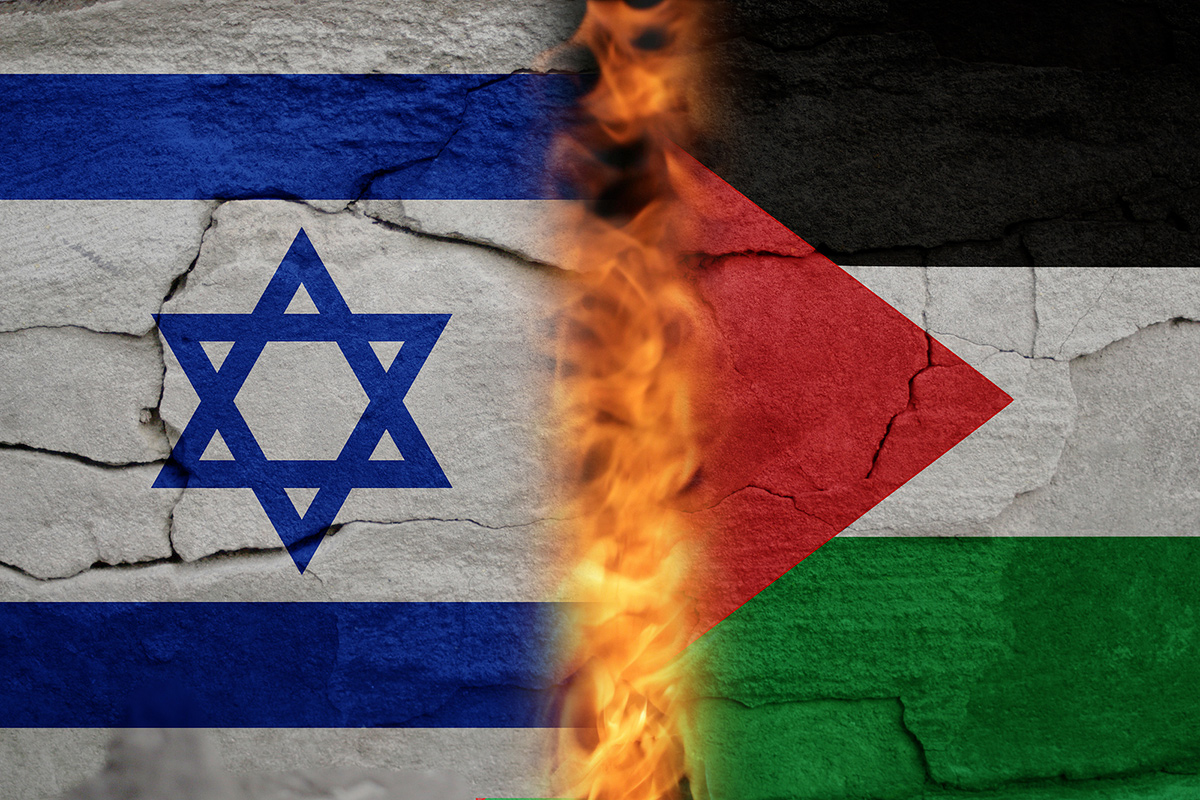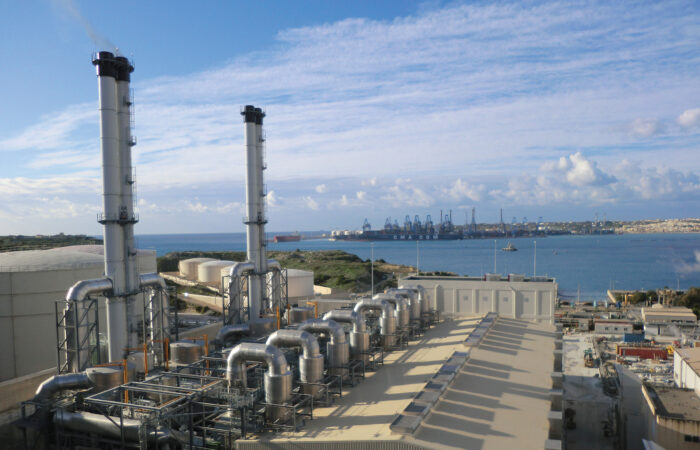Ioannis Tirkides*
The killing of innocent civilians is unacceptable and thus the Hamas attack of October 7, no matter its origins, is an atrocious war crime. But beyond the event itself, the Israeli-Palestinian conflict has a long and brutal history. The hatred that exists runs deep, but there can be no winner if the victory of one involves the extermination of the other. The danger is that, if left unto itself, this conflict could engulf the entire region, and even turn nuclear. As it is, there are too many questions, too few answers, and very limited options. We discuss the unfolding tragedy, the prospect of a broader war, and the difficult future facing the Middle East.
The brutality of Hamas and Israel’s internal strife
The attacks have been brutal, and we will never know how the security barrier that separates Gaza from Israel was penetrated, and how it took the Israeli army more than one hour before it was able to respond. An investigation will eventually be undertaken, but as a security and intelligence failure it was of immense proportions, even worse than the security and intelligence failure of the Yom Kippur war of 1973, when Syria and Egypt launched their surprise attack.
But for a long conflict such as this, it is important to understand its context, at least in the current moment.
The period immediately preceding the attacks was a period of unrest and internal strife in Israel, resulting from Prime Minister Netanyahu’s judicial reforms. The country was split. The judicial reforms were intended to weaken the independence of the judicial system making judges more subject to political control. In July, the governing coalition actually succeeded in passing into law a key part of the judicial overhaul, the abolition of the so called ‘reasonableness’ clause, that allows the supreme court to overrule government decisions.
This has everything to do with the political schism in Israel and the Israeli-Palestinian conflict. The country is deeply divided between the nationalists and religious right, on the one hand, and the more moderate secularists on the other. The nationalists and the religious right parties, together with the Likud party, now form the governing coalition, and hold a narrow majority in the Knesset. They oppose the two-state solution and claim, instead, Israel on the ‘land of Israel’, which is traced back to biblical times and which denies most of the West Bank to a Palestine state.
The supreme court consists of judges of the secular tradition that would block legislation of the nationalist and religious right.
The parts of the West Bank left for the Palestinians have been shrinking over time as Israeli settlements have been increasing since the second Intifada, which was ignited by Ariel Sharon’s visit to the Al-Aqsa Mosque on Temple Mount in 2000. Sharon was leader of the opposition at the time and was elected prime minister a year later in 2001.
The West Bank is currently divided into 165 scattered Palestinian enclaves that are under partial Palestinian rule. The remainder of the West Bank, including 200 Israeli settlements, is under full Israeli control. The Gaza Strip on the other hand, has been ruled by the militant group Hamas since 2007.
The threat of escalation
In response to the attacks by Hamas, Israel has blockaded Gaza, has cut electricity and water supply, it is bombing large parts of it, and forcing Palestinians from the northern parts further south, all, in preparation for a ground invasion.
Israel’s primary goal is to defeat Hamas, evict them from Gaza or destroy them altogether. The United States is offering its full support and has sent two aircraft carriers in the region, and a third is on its way. The United States is acting to deter the escalation of the war not by averting the ground invasion, but by threatening to interfere itself, if Hezbollah or another entity or country enter the war.
On the other side of the conflict, Arab and other Muslim countries including Turkey, are strongly opposed to a ground invasion in Gaza and what they see as genocide against the Palestinians. The Hezbollah militia in Lebanon, may enter the war in this event. If at that point the United States intervenes to counter Hezbollah and help Israel having to fight on two fronts, it will effectively risk turning the war from a domestic conflict that needs to be contained, into a larger regional war.
Once a war escalates in this way it will be difficult to control its dynamics. The war could bring in the Syrians, the Iranians, the Turks, and the Russians. It is unlikely for regional Muslim powers to stand idly by and watch Israel, with the support of the United States, killing the Palestinians in large numbers and evicting them from Gaza.
The risks are high. Aircraft carriers may sound overwhelming, but in today’s warfare, they are not what they look, and might in fact be vulnerable to attacks. What happens if Iranian drones or other weapons attack and destroy American military assets? And if the United States attacks Iran, will Russia stay out?
The American presence in the region will not deter, neither Hamas nor Hezbollah or Arab countries from broadening this conflict if Israel enters into a long and deadly land war in Gaza. The capabilities Hezbollah and Hamas possess shouldn’t be underestimated, neither should the damage they can inflict on Israel itself. A ground invasion into Gaza will not be an easy or quick expedition by Israeli forces. That’s what Hamas may want in fact, we don’t know that for sure, to lure the Israelis into a fight they cannot win without taking heavy losses. The Israeli army knows very well what urban warfare is. They will ensure that their troops have all the support they need, but moving through rubble and ruin against an enemy that is underground, does not have many advantages.
Once the war starts and once it goes beyond Gaza and it becomes regional, one cannot tell what form it will take or how long it will last. In 2001 the United States launched a war against ISIS that lasted 20 years, it cost tens of thousands of lives and many trillions of dollars, and in the end, it didn’t end as planned. The United States is now headed in the same direction, to entangle itself in a long war, the dynamics of which it will not be able to control, and which will be endangering Israel itself in the end.
Needless to say, the implications of such an escalation will be catastrophic. It will send oil and gas prices steeply higher and will plunge the global economy into an inflationary recession. The mix of an energy crisis, recession, and inflation as well as tangible security threats, will underpin significant civil unrest not only in the Middle East, but also in Europe and the United States.
Conclusion
The Israeli-Palestinian conflict is a source of instability in the Middle East. Left unto itself it can be absolutely destructive. The solution to this long conflict cannot come about by the complete victory of the one side over the other. A massive change in mindsets is required. A two-state solution is the only viable option. Many Israelis support it, not the current government. The United States may still be committed to it, and it is also the position of the United Nations, but no one in the west is interested to impose it. They should, the United States foremost. A regional war will be tragic, it will lead to unforeseeable consequences, and will risk the complete alienation of The United States from the Middle East and the marginalization of its influence in the region. This will not be to the best interests of Israel either.
*Ioannis Tirkides is the Economics Research Manager at Bank of Cyprus and President of the Cyprus Economic Society. Views expressed are personal. The author wishes to thank George M. Georgiou for comments and suggestions on an earlier version.




